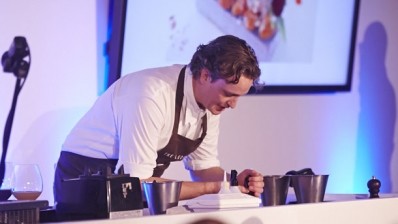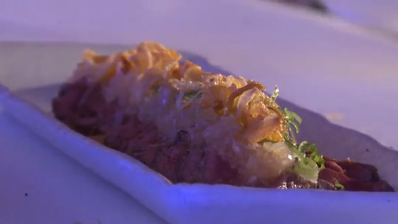Farm Frites Development Chef Club
Scott Hallsworth: Kombu marinated salmon sashimi
Hallsworth begins by filleting a whole salmon in a Japanese fashion, noting the strict cleanliness that Japanese chefs use when preparing seafood. “There seems to be a lot more care and respect,” he explains. “The knives are wiped clean after most strokes because they don’t want anything from the skin touching the inside.... it is going to be used for sashimi and you are not cooking it again so you can’t get rid of any bacteria like that.”
He then demonstrates how to create authentic sashimi, explaining that experienced Japanese chefs will not always begin with the freshest fish. “The umami levels go higher, particularly in fish like salmon and tuna, when they are older. A tuna that is a good week old is in its prime,” he says. “If you are looking at diver scallops though, you don’t want them to be a week old, that would be a problem. So I guess there is not one rule.”
Kombu - giant kelp which grows in the sea off the North of Japan - is used to impart umami into the fish. “Umami just means that it gives you the big mouthfeel, the 'savoury-ness', the thing you cant put your finger one but it is super tasty,” says Hallsworth.
Sheets of kombu are dampened with saki before the sliced fish is added and topped with sliced green chillies and katsuobushi - bonito that has been mould cured, smoked, dried out and shaved.
A splash of saki and sprinkle of sea salt are added before the parcel is wrapped in another sheet of kombu and clingfilm, before being left to cure for a few hours or ideally overnight.
The sauce for the dish is made from green chillies, spinach, rice vinegar, den miso and truffle oil. “I think sometimes people wonder why you use western ingredients with Japanese food, but if you go to Japan you are going to see Japanese people using western ingredients with their food. They embrace all cultures and flavours,” Hallsworth explains.
The dish is then topped with sesame seeds, puffed rice or dehydrated soba to give the extra texture. “If you buy the soba grain and overcook it then dehydrate it, it puffs up like a little crunchy garnish. It is good for salads, it's almost looks like a soba cereal,” says Hallsworth.

































